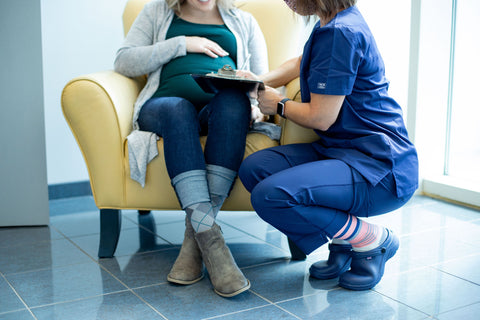
Hillary Clinton, Serena Williams and Frida Kahlo. What do these women have in common? Each woman was diagnosed with, and hospitalized because of a blood clot or Deep Vein Thrombosis (DVT). March is DVT awareness month and because there are over 100,000 blood-clot related deaths annually, and we sell compression that can help prevent blood clots in your legs, RejuvaHealth wants to be apart of spreading awareness.
RejuvaHealth was established because our founder, Kelsey, developed a blood clot. After the diagnosis her doctor recommended compression socks. She instantly felt the tremendous benefits of compression and wore them daily. The only problem was, she hated how they looked. The boring, white socks weren't cutting it; she wanted fashionable leggings and patterned knee-highs. So, she started RejuvaHealth to empower women, like herself, with fashionable compression. Today, RejuvaHealth has chic pantyhose, compression leggings that actually work and cute, patterned socks.

Shutterstock
A DVT develops when your blood thickens and begins to clump together. This can happen if you are sedentary, are taking estrogen or a myriad of other combinations. If you are concerned you may have a DVT these are the signs and symptoms you should be looking for:
Family history - blood clotting disorders can be inherited
Age - you can develop a blood clot at any age, regardless of gender. However, anyone over the age of 50 has an increased chance of developing a blood clot
Pregnancy and up to 3 months after delivery - hormones, body changes and other factors that pair with pregnancy can increase your chance of developing a DVT
Surgery - inactivity post surgery and your bodies natural reaction to clot when you're operated on, are why this is a risk factor
Hormone therapy, including birth control - hormones affect the thickness of blood, which is directly related to blood clotting
Injury - if something severely traumatic affects your leg, it may damage the vein. Or, if you remain sedentary because your leg hurts, a clot may form
Smoking - makes your blood sticky and therefore increases your risk of blood clot
Cancer - radiation and other cancer treatments can cause your blood to clot
Sitting for extended periods - a long trip, like a flight overseas, can increase your risk of developing a DVT because you will be seated for an extended time period. This is why a sedentary lifestyle is also a risk factor
Your calf muscles assist your veins by pumping blood towards your heart. Moving your gastrocnemius and soleus muscles (in your calf) will help prevent blood clots in your leg. Seated calf stretches, walking or any other type of exercise that gets your calf muscles pumping, will return blood to your heart and lessen the chance of a blood clot forming.

Compression can be worn to help prevent spider veins, swelling and DVTs. If you have any of the risk factors listed above, or other concerns about developing a blood clot, you may want to consider wearing compression socks, pantyhose or leggings. Compression garments use pressure to move blood and keep it circulating. This may prevent blood clots from forming because DVTs form when your blood isn't moving freely, but pooling and clotting. If you are pregnant we have an entire maternity line to help prevent cankles and blood clots.
This article is not meant to be a replacement for doctors advice. Consult a physician if you believe you are experiencing a medical emergency.
25% off your next order just for signing up.